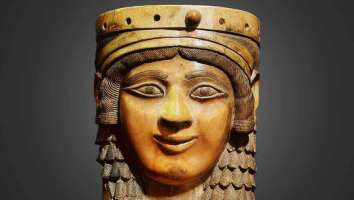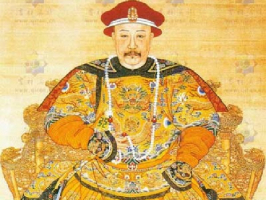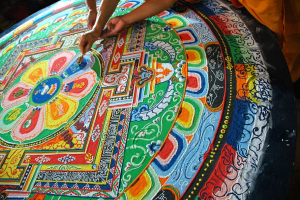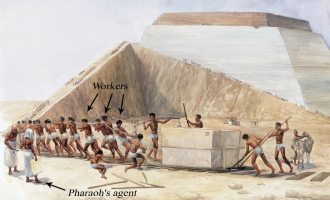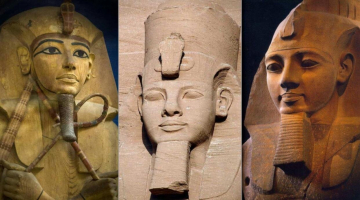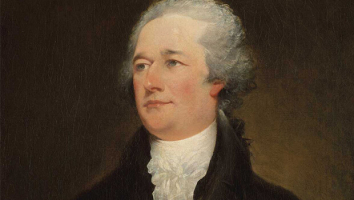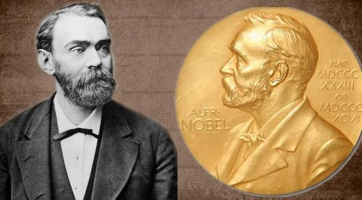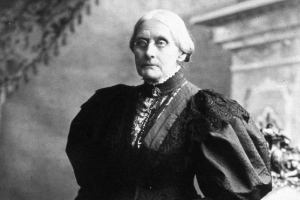Top 6 Interesting Facts About Cats In Ancient Egypt
For thousands of years, the Egyptians worshiped a variety of animals. Animals were revered for a variety of reasons. Cats were regarded to be more remarkable ... read more...than dogs because of their capacity to protect and hunt. Cats were thought to be mystical creatures capable of delivering good luck to anyone who kept them. This is a list of interesting facts about cats in ancient Egypt that you may not be aware of.
-
The greatest way to follow the cat's rise to renown in ancient Egypt is via art. The mural uncovered in the tomb of an Egyptian official Baqet III (dated to the 21st century BCE) depicts a cat facing a field rat, demonstrating the animal's critical function in crop protection. However, from around 1450 BCE, the cat began to appear rather regularly in tomb scenes, particularly in Thebes, Egypt's capital during the New Kingdom era. The renowned Nebamun fresco depicts a wonderfully painted cat attacking birds while accompanying its owner on a fowl hunt. The detailed depiction of the 3500-year-old tabby might well be mistaken for a work by the "ancient masters."
By this time, the cat had evolved into a spoiled pet, beloved by monarchs and noble families. This transformation can be seen in the tomb scenes, which go from outside to more intimate, residential settings. The cat sitting near or under the owner's chair serves as a reminder of the animal's changed function. While it is undeniable that cats formed an important part of the home in both urban and rural settings, portrayals of the felines can be interpreted in a variety of ways. We must not forget that ancient Egyptian paintings had symbolic implications as well. For example, the cat was frequently shown under the wife's chair, signifying fertility and femininity, and supplementing the long-established motif of dogs sitting or laying under her husband's chair.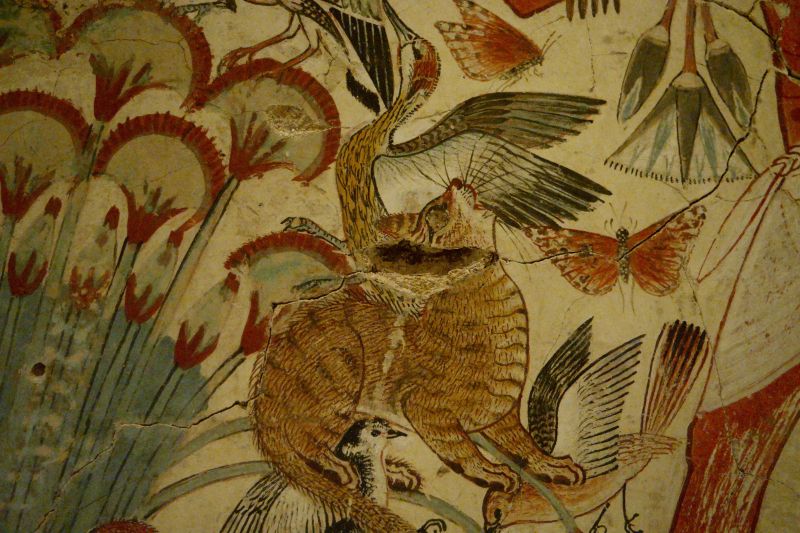
The detail on a tomb painting, found in the tomb of Nebamun - wikimedia.org 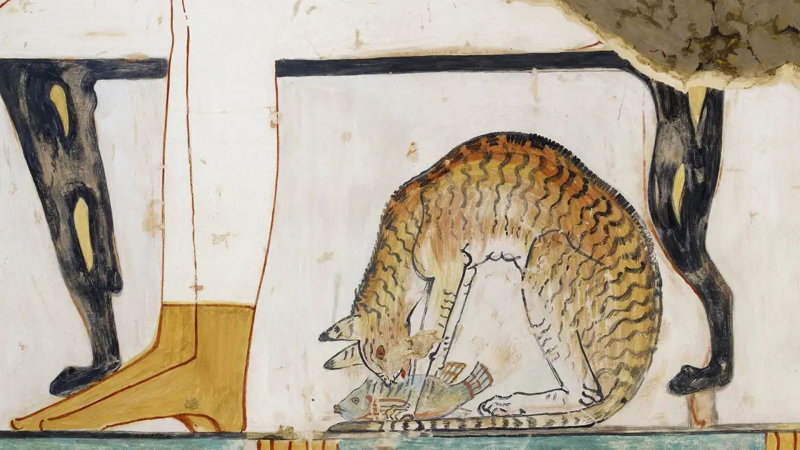
A detail of the tomb fresco, showing a cat in the domestic setting, eating under a chair, ca. 1400-1391 BCE - Science.org -
Cats were initially regarded as receptacles for gods rather than as gods themselves. Cats were considered by the ancient Egyptians to be inhabited by gods, and some of the divinities even adopted their likenesses. For example, Bastet (also known as Bast) was the sun deity Ra's daughter. Bastet was revered as the goddess of protection and was connected with the house, domesticity, women's secrets, fertility, and childbirth as early as the Second Dynasty (2890 BCE). She was an important goddess in the Egyptian pantheon, and she was initially represented by a lion. Later, she was represented as a person with a cat's head, and it was believed that she could transform into a cat at will. The gods and goddesses of Egyptian mythology had the ability to change into various animals. The power to transform into a cat belonged to just one deity, the goddess Bastet.
The goddess Bastet was frequently shown as having a feline head and a pair of golden ears. One of the ways humans may insult the goddess was to harm one of her cats. She could turn into a bloodthirsty, frightened lion when she was really angry, and the only way to calm her down was by giving her beer. She served as the guardian of people and was a symbol of beauty, pleasure, love, and happiness.
Egyptian women and men would wear amulets depicting Bastet during times of fertility, such as harvest and childbirth, in the hope of channeling some heavenly feminine energy. In her honor, various paintings, sculptures, architectural monuments, and other exhibitions have been made. The city of Bubastis served as the focus of Bastet's religion during the second dynasty (2890–2670 BC) when she was very well-liked. A mummified cat was allegedly buried inside the goddess' temple, which was constructed in the city in her honor. People flocked from all around to see the magnificent temple that had been built in the city of Per-Bast.
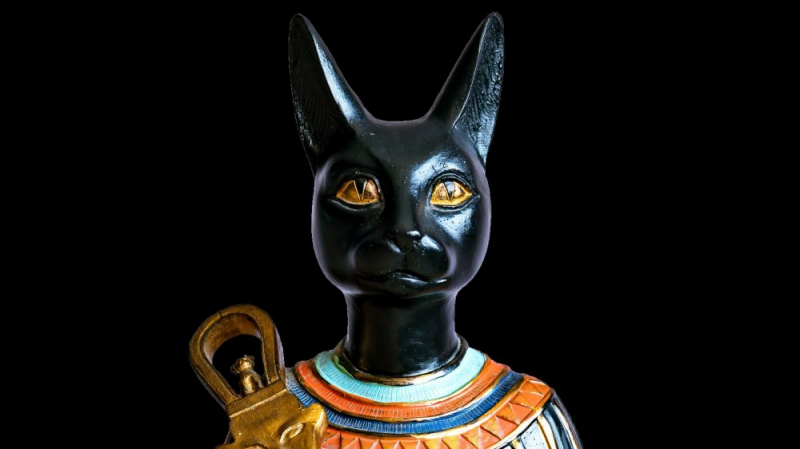
Grunge 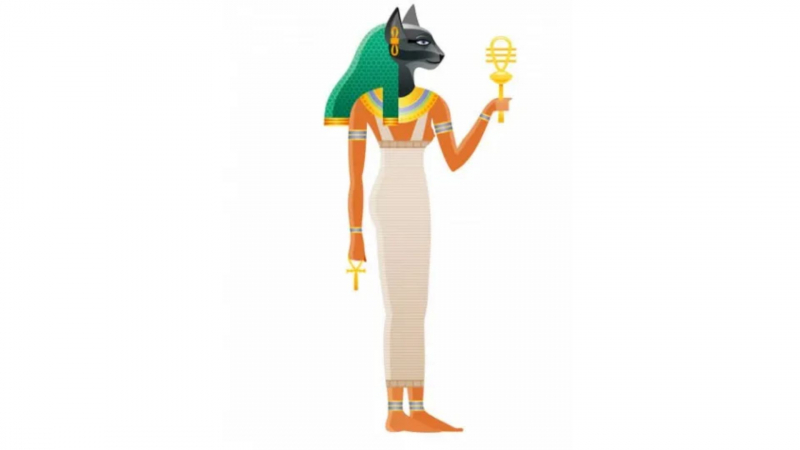
Pinterest -
In the Battle of Pelusium in 525 BC, the Persian King Cambyses II, who was cognizant of Egyptian culture, had the picture of Bastet painted on his soldiers' shields and ordered his armies to attach cats and other cherished animals like dogs, sheep, and ibises in their shields.
The Egyptian army did not assault and abandoned their positions after seeing their beloved goddess on the enemy's shields and fearing that they would hurt the sacred animals. Many were slaughtered on the field, and those who were not killed fled to Memphis. Memphis was besieged and eventually fell. Pharaoh Psametik II was apprehended and executed. Egypt's sovereignty was thus destroyed, and the territory was transferred to Persia until the arrival of Alexander the Great many years later.
It is thought that the Persians would have won regardless of the technique utilized since King Cambyses II had far more experience than the newly anointed Pharaoh Psametik II. Nonetheless, the fight was won by employing an unconventional approach of using animals as hostages.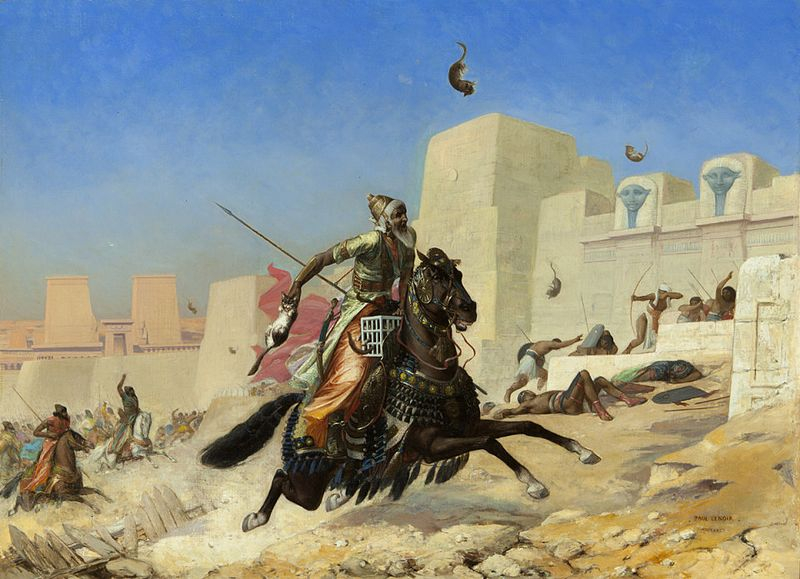
According to Polyaenus, the Persian soldiers allegedly used cats - among other sacred Egyptian animals - against the Pharaoh's army - Paul-Marie Lenoir's paintwork, 1872. 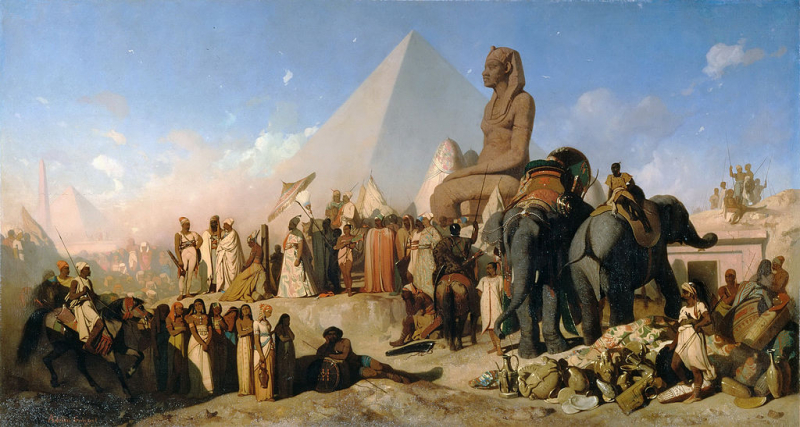
Meeting Between Cambyses II and Psammetichus III after the Battle of Pelusium - French painter Adrien Guignet -
Rich families would commemorate these beloved pets by dressing them in jewels and feeding them regal goodies. The cat was considered another member of the family, which is why they are treated the same as the rest of the family, especially after death. The cats were mummified after they died. Richer folks mummified their cats with jewelry when they died. Even some owners buried themselves beside their cats.
The entire family participated in the mourning process when the family cat passed away by shaving off their eyebrows and staying in mourning until their eyebrows came back as a representation of their suffering and loss. However, not all of the cats were treated. As it is today, only those from privileged families would receive such therapy.
There are statues and paintings of all different kinds of cats in ancient Egyptian artwork. Cats were so unique that anyone who killed one, even if accidentally, was put to death.
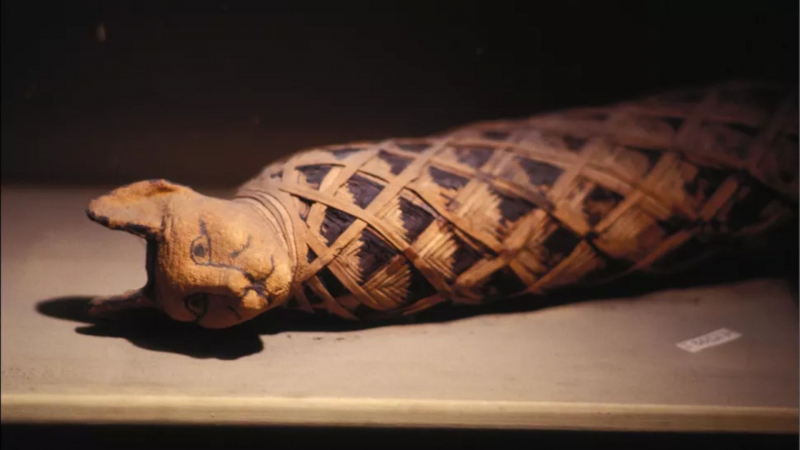
A mummified cat from ancient Egypt. - Daniel Simon/Contributor /Gamma-Rapho via Getty Image 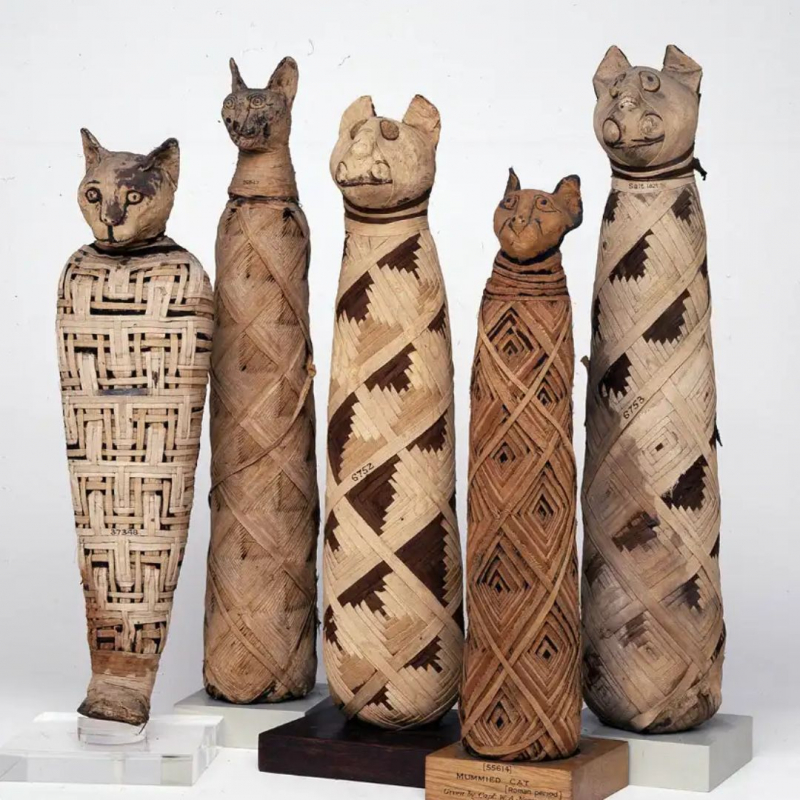
Cat mummies, ca. 30 BCE - British Museum -
Killing a cat was considered a severe capital offense, thus the punishment was to suffer the same outcome as the victim: death. If the death was caused by an accident, the punishment was either the same or might be replaced by the payment of a fine, depending on the time period.
According to Herodotus, if they were trapped in a burning building, Egyptians would save the cats first before attempting to save themselves, or another person, or put out the fire. According to some analysts, not even the Emperor could forgive whoever committed this atrocity. A common narrative among amateurs claims that not even Pharaoh Ptolemy XII Auletes, father of the fabled Cleopatra, could prevent the death of a Roman soldier who accidentally killed a cat. As a result, the poor soldier, who was unaware of the gravity of his mistake, was sentenced to death.
Nonetheless, some ideas believe that cats were slaughtered and mummified in the city of Bubastis during specific eras as a tribute to the goddess Bastet. Other ideas suggest that cats may be sacrificed in order to be buried next to their owners, allowing the cat to accompany the owner on his journey to the other side. These hypotheses are intriguing because they imply that there may be exceptions to this law depending on the time period.
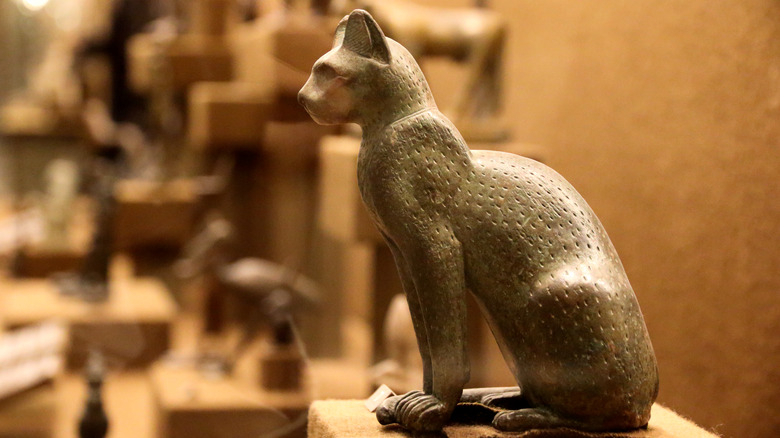
Grunge 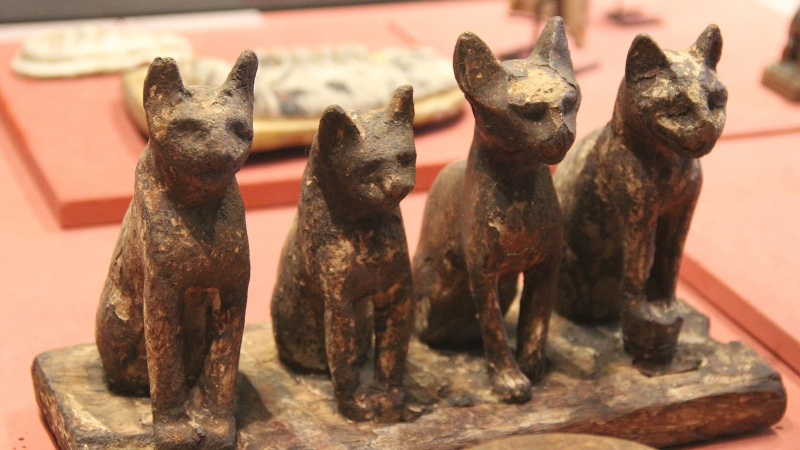
Grunge -
Cats, dogs, hippos, and falcons were among the many pets owned by the ancient Egyptians. As previously stated, domestic pets were mummified and buried alongside their owners. However, animals were also mummified on a large scale. This massive cemetery was discovered at Berenike, a port town on the Red Coast, and is thought to be nearly 2.000 years old. It dates from the pre-dynastic period, when the Roman Empire ruled the region.
Cats made up roughly 90% of the animals interred at the site. Many of the felines had iron collars or shell and glass necklaces. One was buried on the wing of a huge bird.
Meanwhile, dogs accounted for around 5% of the graves. The canines had frequently lived into old age, losing teeth or suffering from gum disease and worn-out joints - conditions that would have rendered them unable to fend for themselves. Some of the dogs had also healed from injuries incurred years before they died.
In addition to the cats and dogs, monkeys smuggled from India were buried at the location. Nonetheless, the monkeys, like the cats and dogs, were buried with great care. One was wrapped in a woolen blanket, while others were discovered with amphoras and big shells buried beside them.
There were 100 complete animal skeletons discovered, including 86 cats, 9 dogs, and 2 monkeys. Though not the first find of mummified ancient pets, it highlights the enormous lengths Egyptians and Romans went to care for these creatures.
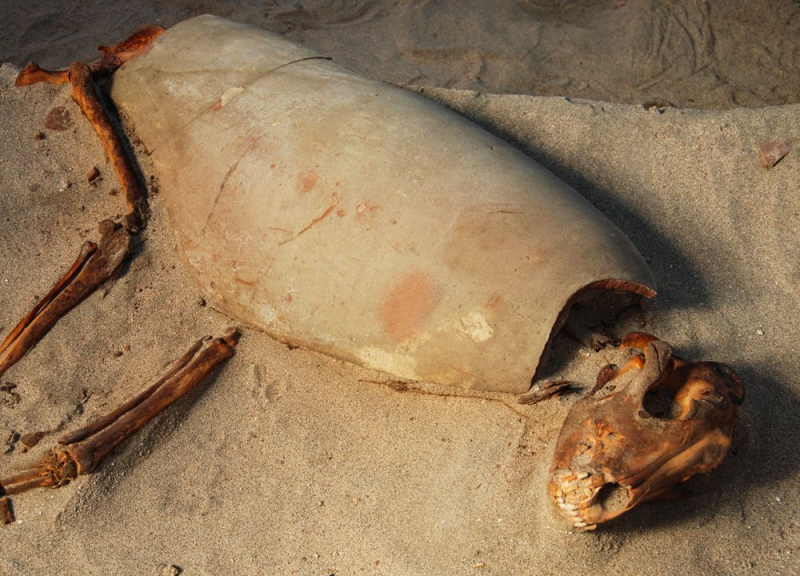
Some of the animals including this dog were buried in pieces of pottery - Maria Osypinska 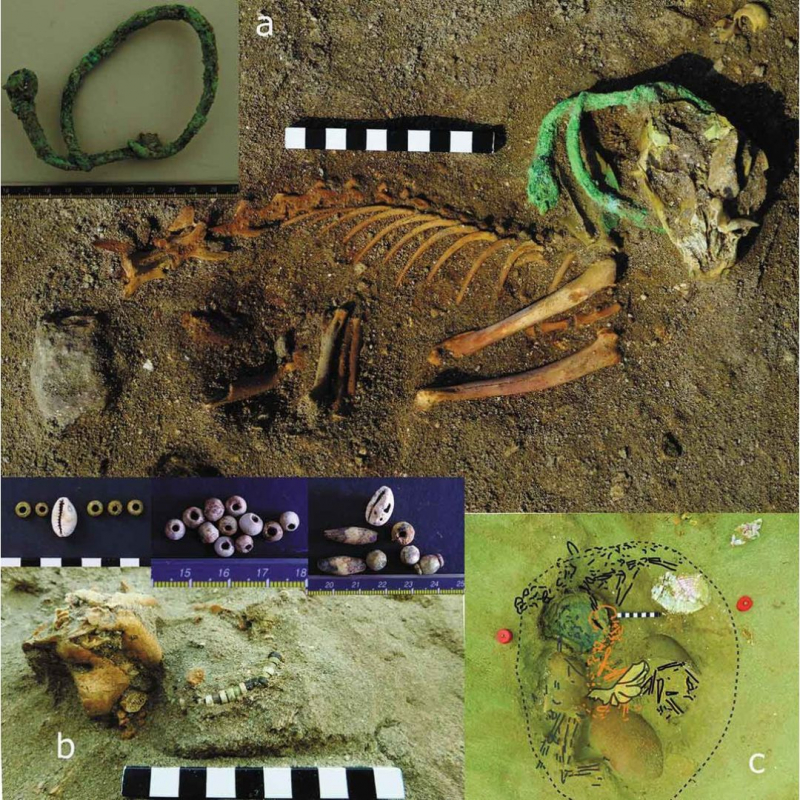
Many of the animals were buried in collars or with ornamental goods. - Osypinska et al. / World Archaeology









